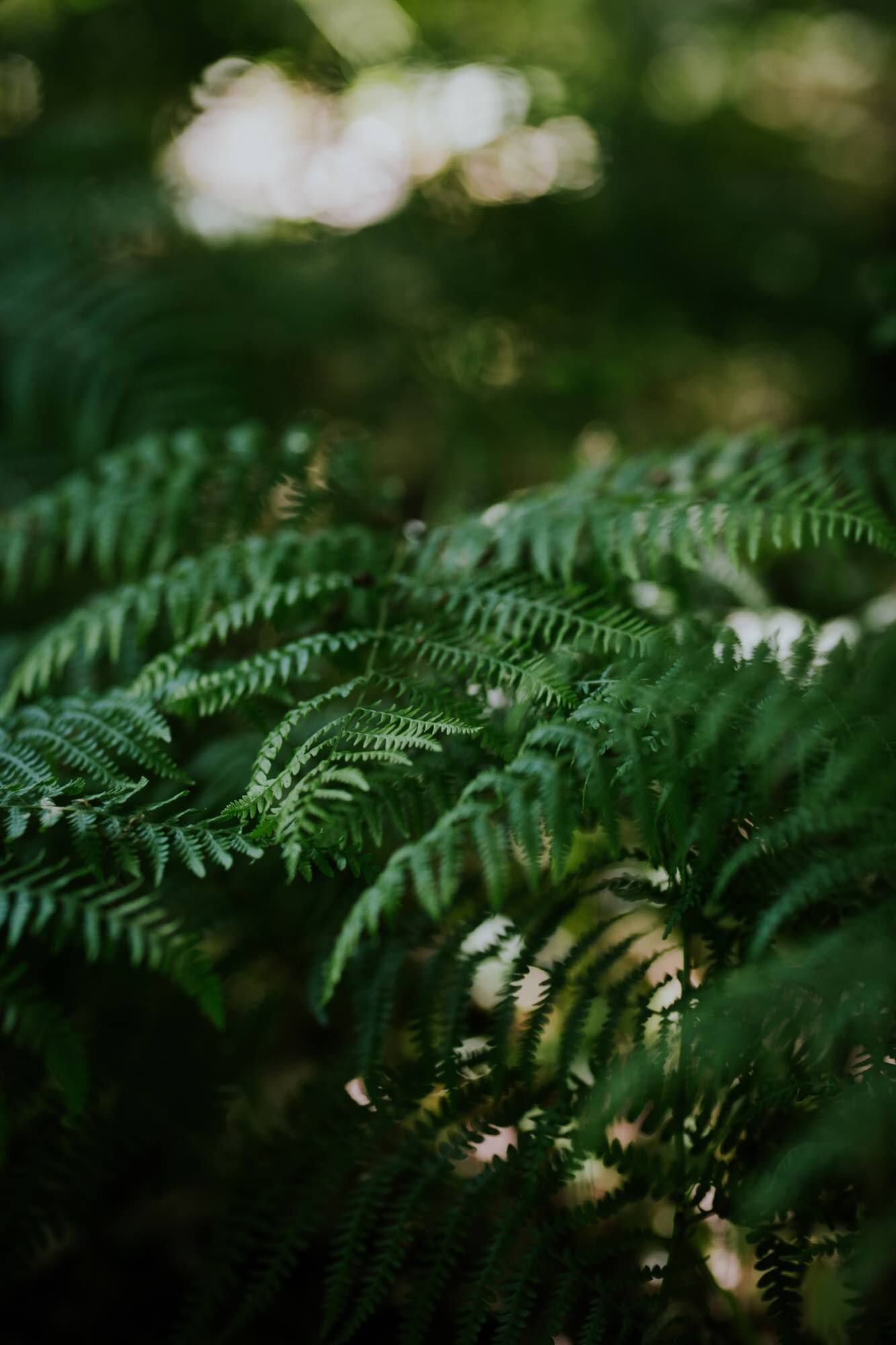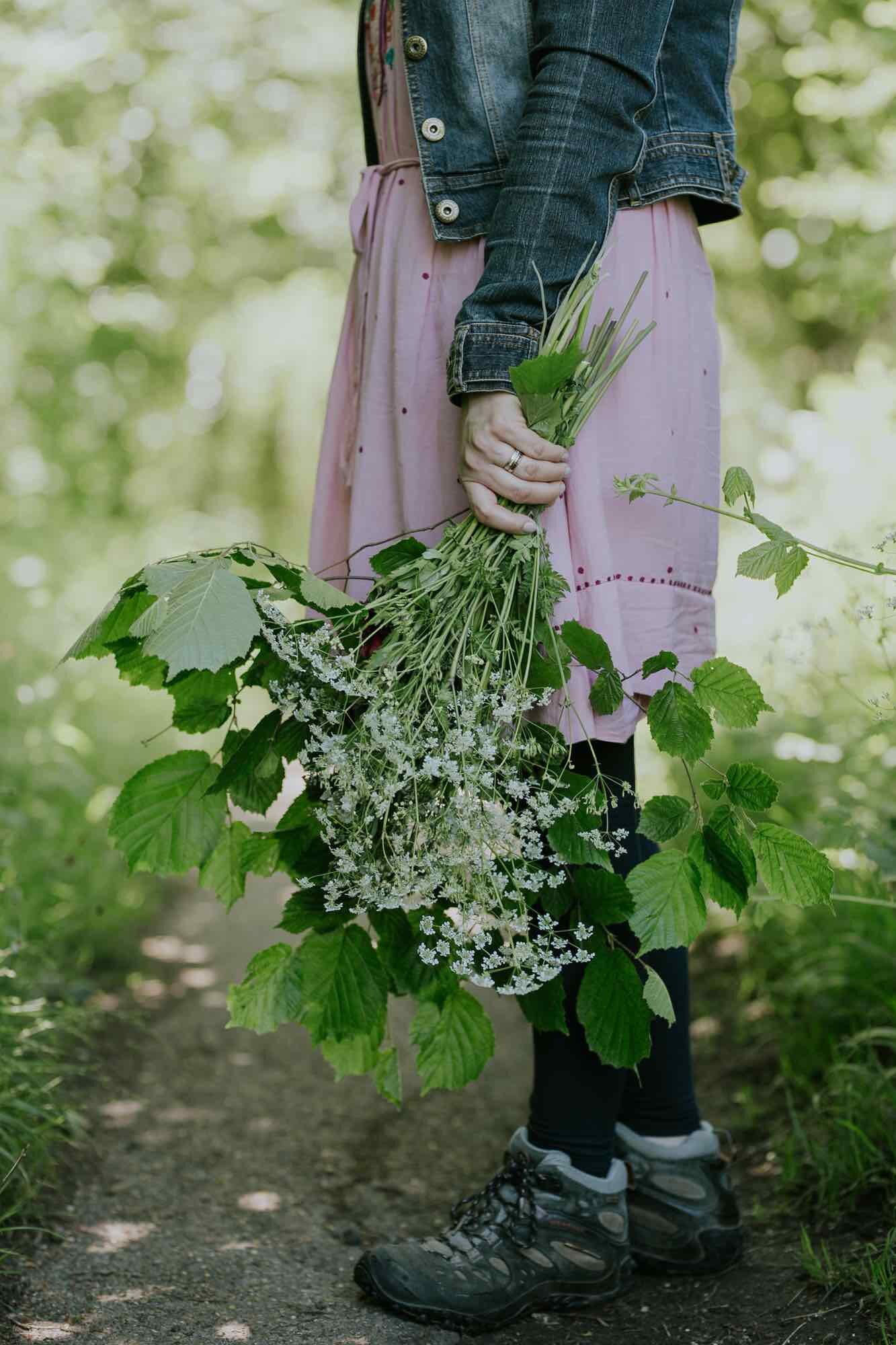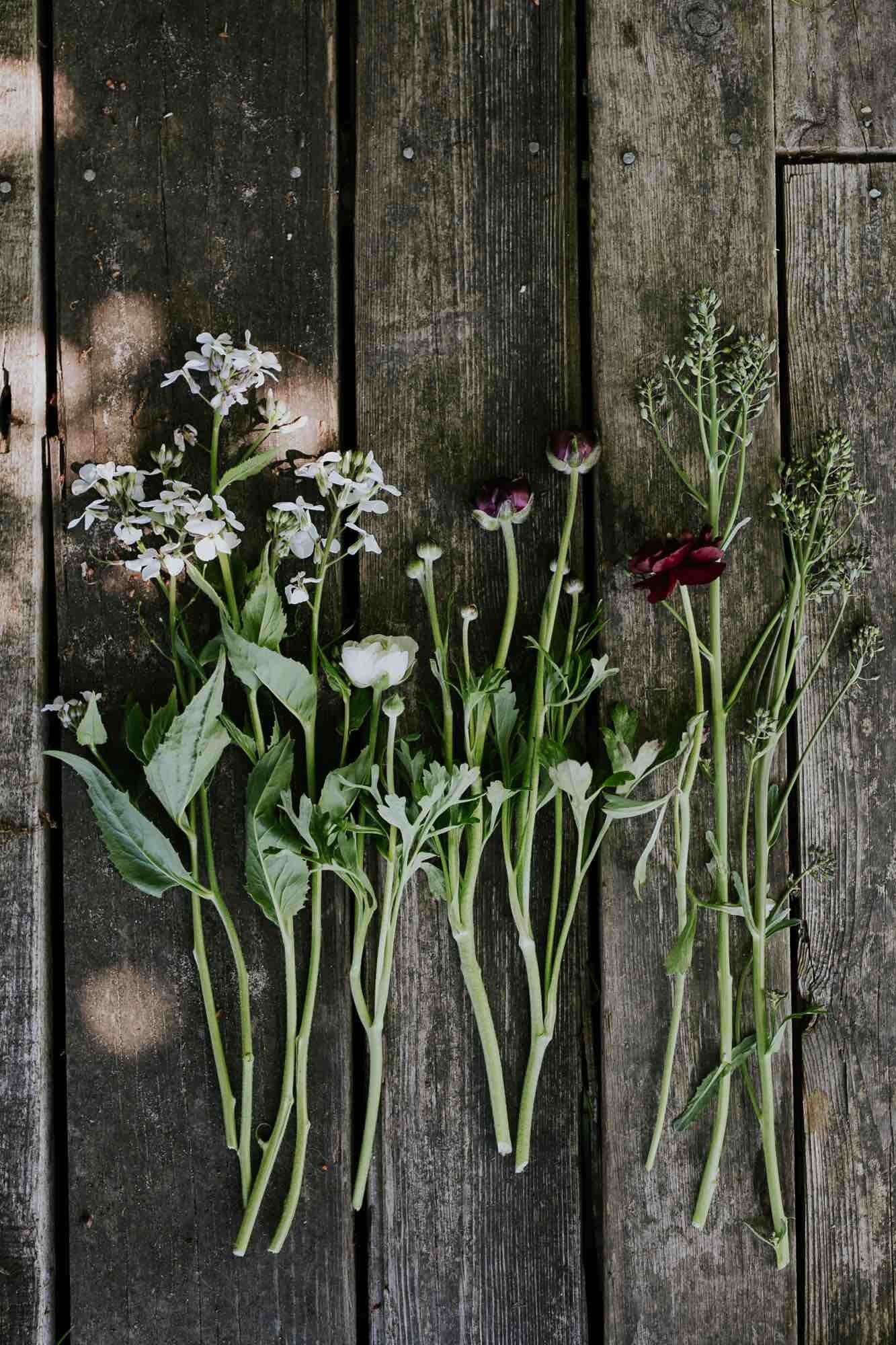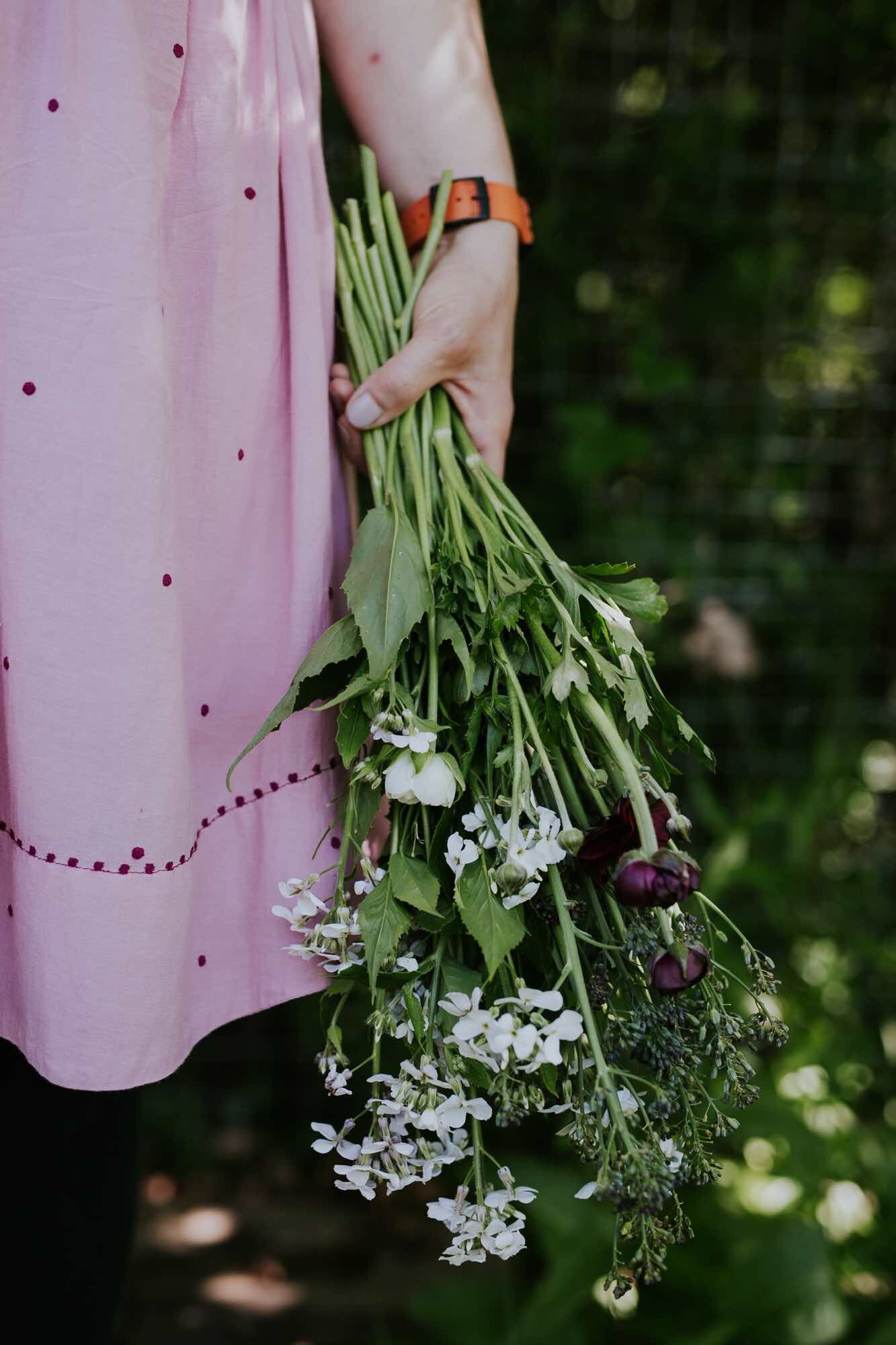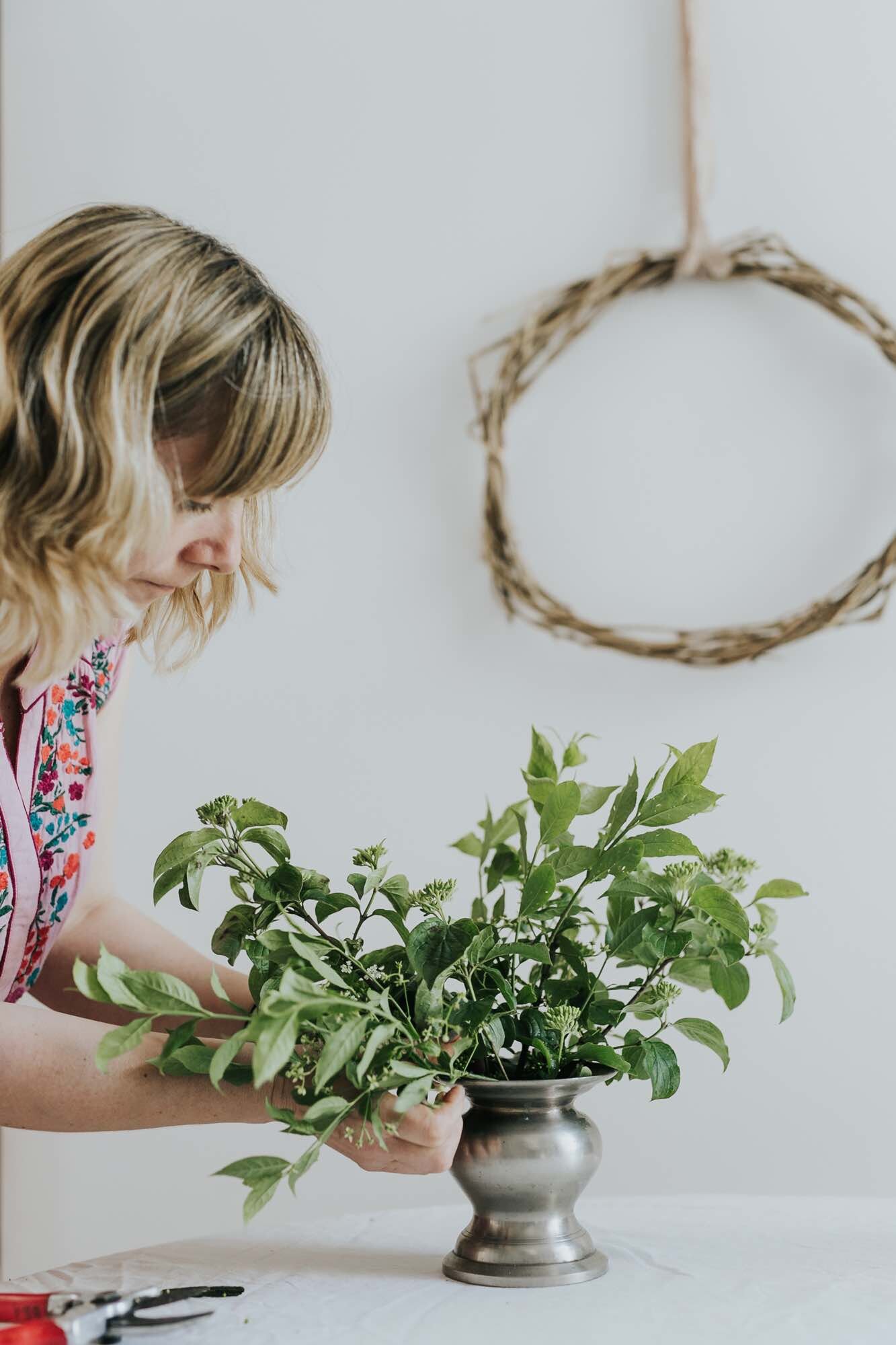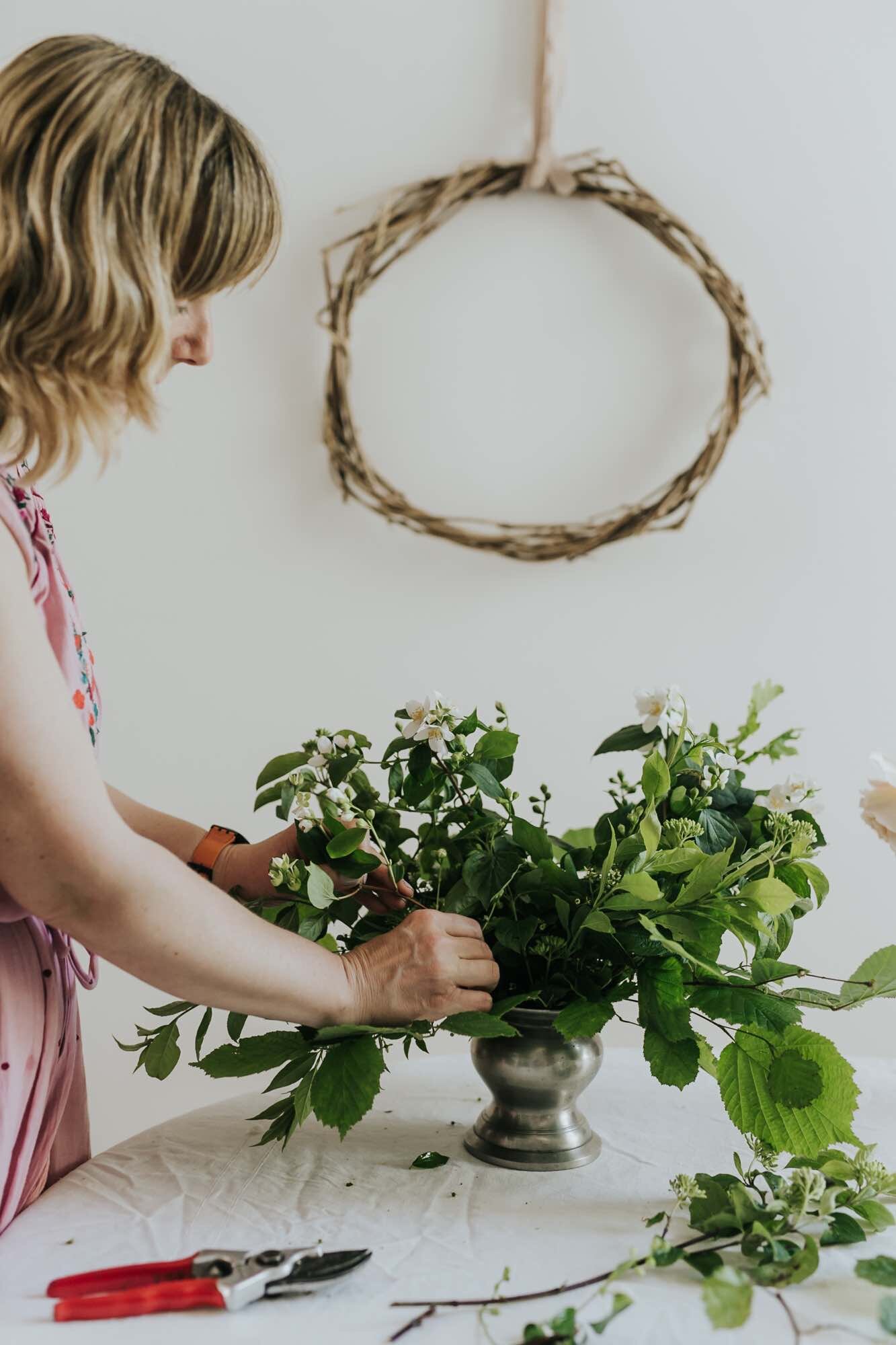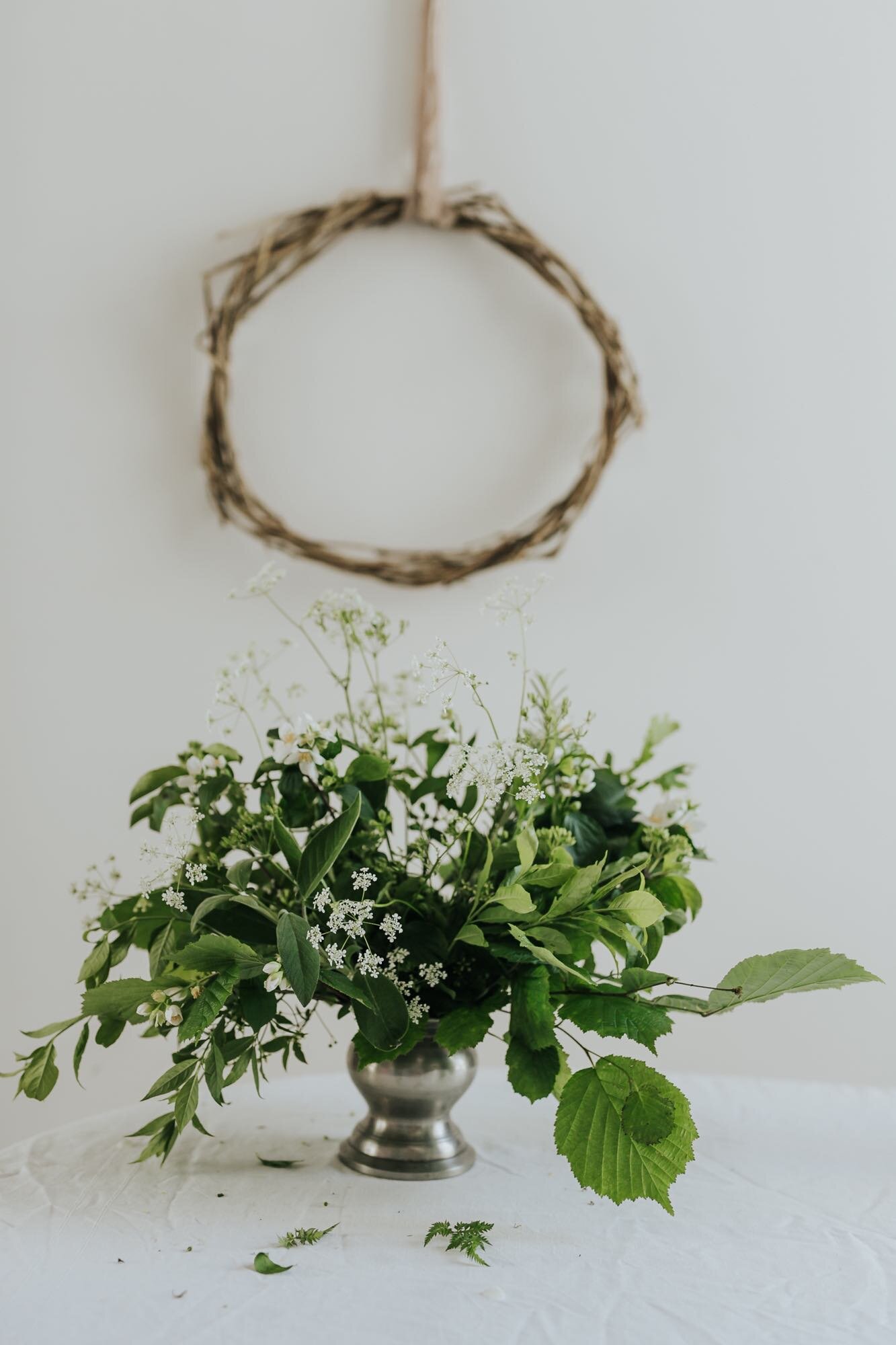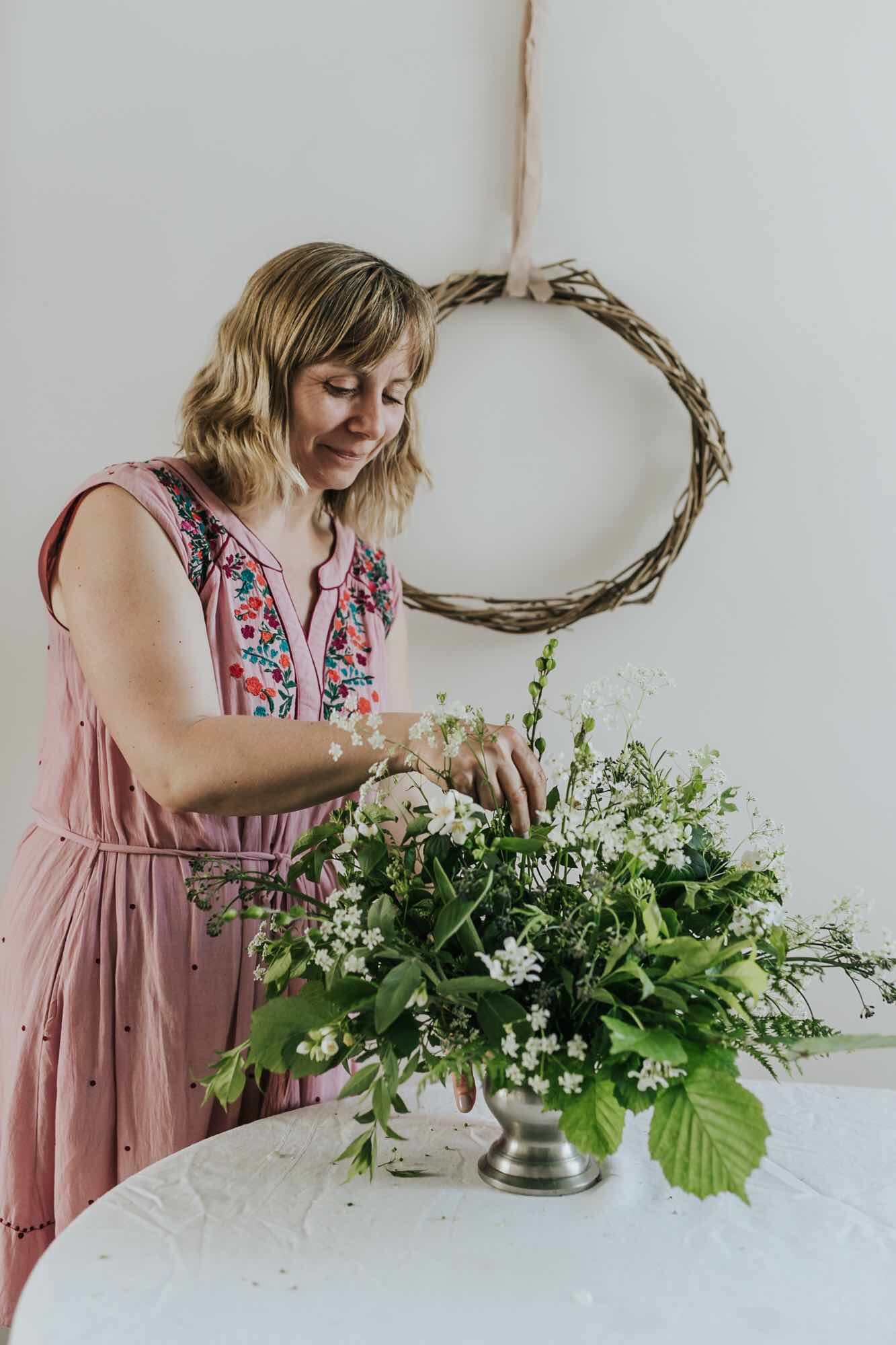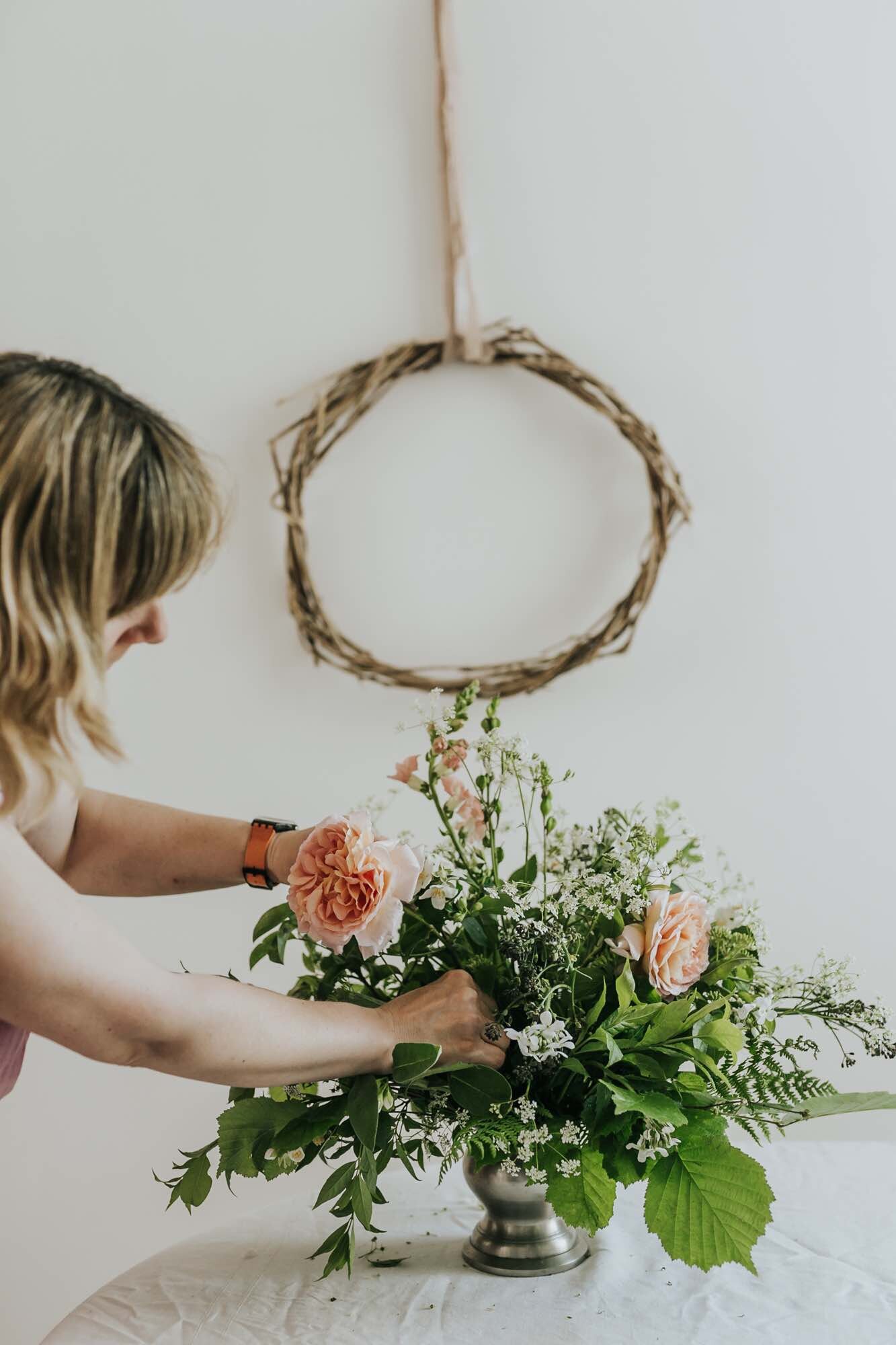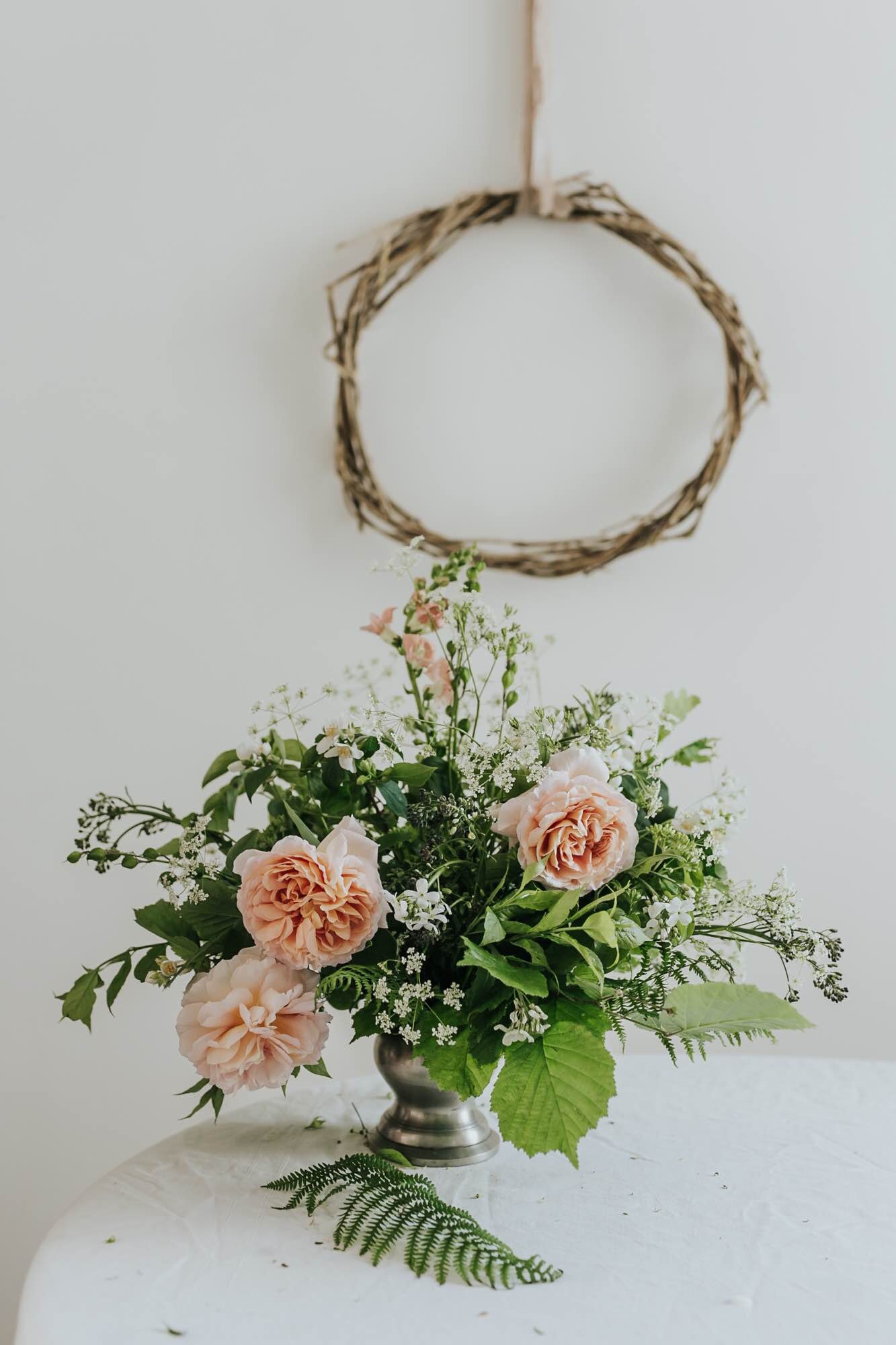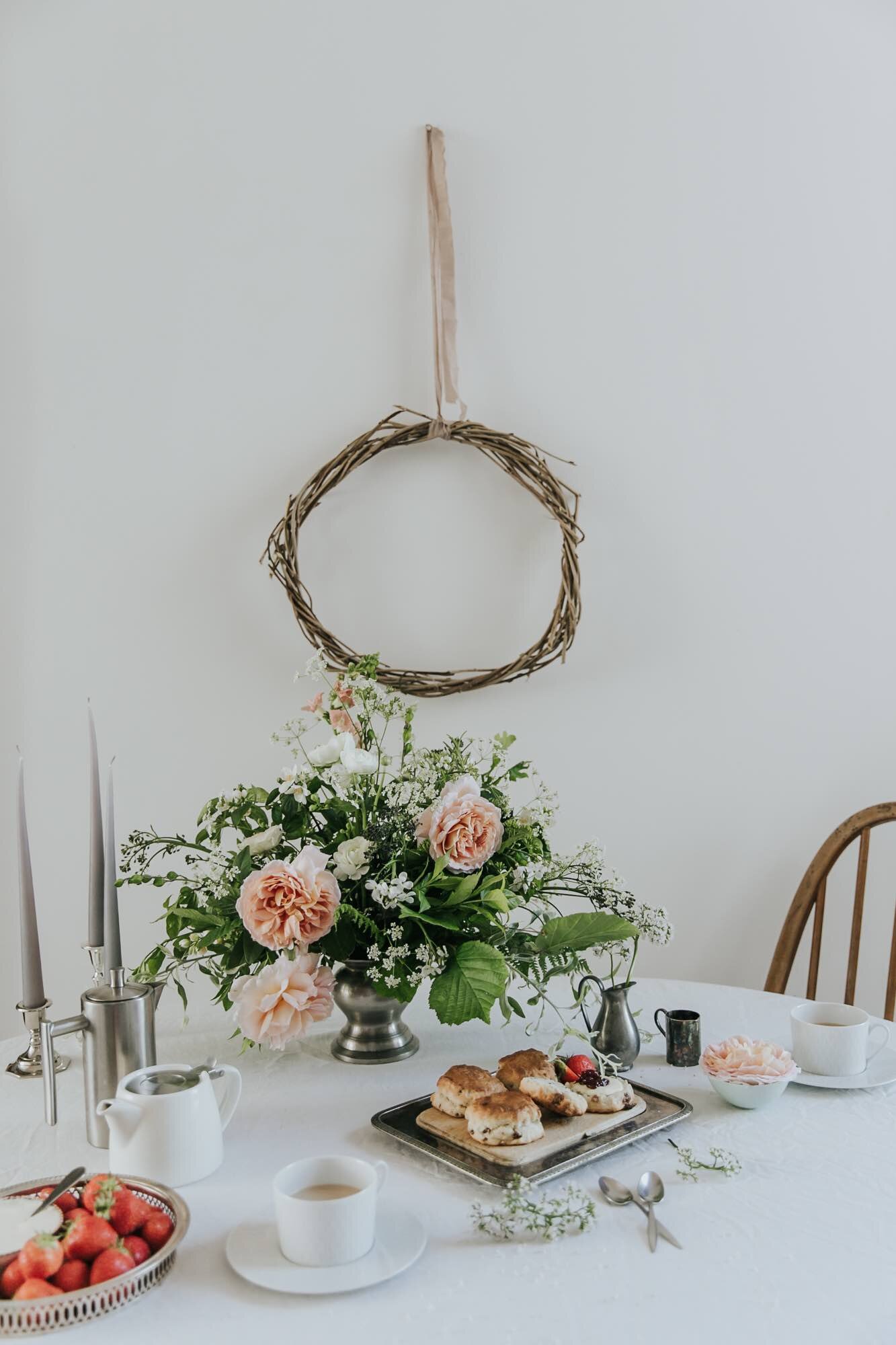in full bloom | Part 1 Summer
Floral project for summer
Creating a floral centrepiece using late spring, early summer garden flowers and foraged seasonal ingredients
Published in Country Living magazine, June 2018
Words and styling by Bea Andrews / Photography by Eva Nemeth
Copying nature and its natural forms
Creating floral displays with the natural landscape in mind by arranging flowers and foliages following the effortless, beautiful patterns in nature can result in some of the most stunning, harmonious floral arrangements. As a floral designer and gardener I have always been attracted to wild and naturalistic planting schemes and relaxed, garden-like flower compositions. Nature has a wealth of patterns to observe and imitate and by capturing its magic incorporating the best seasonal wild and cultivated plants, you are on the right path. In this four part series I will be looking at different seasonal projects incorporating the essence of each season with a few simple, easy to find ingredients.
What to look for on your walks
At this time of year there is a generous offering of foraged goods on hand when it comes to more naturalistic flower arranging. The lanes around the country are awash with froths of cow parsley. This dainty little early summer wild flower (Anthriscus sylvestris) also known as Queen Anne’s lace can make a great impression with its large numbers from April to June. Here in the Sussex woods it is joined by the fresh, still vivid greens of hazel and the large arching, highly divided stems of our native British fern or bracken (Pteridium aquilinum).
A succession of frothy umbels to pick throughout summer
If you missed out on the cow parsley season, a succession of similar lacy wild flowers can be found throughout summer. The elegant, upright hedge parsley (Torilis japonica) with its smaller and daintier flower heads appears later in July and August, closely followed by the wild carrot (Daucus carota) late summer in August-September. None of these plants should be confused with their highly poisonous cousin the hemlock (Conium maculatum) which boasts similar white frothy, lacy flower heads but it’s a much taller plant with purple blotched stems. Cow parsley can be tricky when picked at an early stage. Its vase life improves with age, once the stems become stronger and darker. Searing the stems in boiling water for a few seconds prolongs vase life.
Collect fern, hazel, oak, hawthorn, beech, hornbeam and other wild stems that grow around the landscape near you
Pick flowers from your garden or allotment, or supplement it with a few seasonal blooms from your local shop if need to
Making a table centrepiece
Using your foraged ingredients and flowers from your garden, create a simple bowl arrangement. Here I list the foliages and flowers I used giving stem counts, but feel free to substitute them with whatever you can find in your area.
collect foliages such as hazel, fern, spindle (Euonymus europea), oak, wild dogwood (Cornus sanguinea), rosemary, sage, weeping pear (Pyrus salicifolia “Pendula”) or similar. Arrange 3 stems of each at an angle in your favourite bowl filled with water. Aim for a good mix of upright and gently arching stems. Use floral pin holder to secure the stems if the bowl is too shallow.
add 5 stems of wild cow parsley, 3 stems each of white sweet rocket (Hesperis matronalis), double white Persian buttercup (Ranunculus), white mock orange stems (Philadelphus), blush snapdragon and finally blush rose Abraham Darby. Place the stems at different heights - think of them growing naturally in a hedge or border. Or use other home grown blooms - a selection of smaller and larger flower heads and a restricted colour palette will give you a more harmonious feel.
Follow the step-by-step instructions on the images below
Weeping pear, dogwood, Rose Abraham D’Arby, rosemary, spindle, fern, philadelphus, sage, oak, cow parsley



